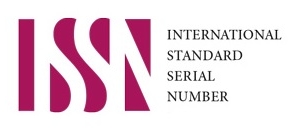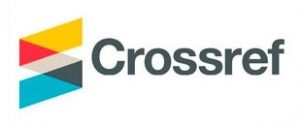Keywords cloud
1. Solving a problem of optimum curves of descent using the enhanced Euler equation
Yangel Yuzhnoye State Design Office, Dnipro, Ukraine1; The National Academy of Sciences of Ukraine, Kyiv, Ukraine2
Page: Kosm. teh. Raket. vooruž. 2020, (1); 3-12
DOI: https://doi.org/10.33136/stma2020.01.003
Language: Russian
Key words: first variation of a functional, joint application of extremality conditions, non-invariance in relation to the coordinate system, parametric shape of the second variation, optimum curves of descent
1. Bliss G. A. Lektsii po variatsionnomu ischisleniiu. М., 1960. 462 s.
2. Yang L. Lektsii po variatsionnomu ischisleniiu i teorii optimalnogo uravneniia. М.,1974. 488 s.
3. Elsgolts L. E. Differentsialnye uravneniia i variatsionnoe ischislenie. М., 1965. 420 s.
4. Teoriia optimalnykh aerodinamicheskikh form / pod red. А. Miele. М., 1969. 507 s.
5. Shekhovtsov V. S. O minimalnom aerodinamicheskom soprotivlenii tela vrashcheniia pri nulevom ugle ataki v giperzvukovom neviazkom potoke. Kosmicheskaia tekhnika. Raketnoe vooruzhenie: Sb. nauch.-tekhn. st. / GP “KB “Yuzhnoye”. Dnipro, 2016. Vyp. 2. S. 3–8.
6. Sumbatov А. S. Zadacha o brakhistokhrone (klassifikatsiia obobshchenii i nekotorye poslednie resultaty). Trudy MFTI. 2017. T. 9, №3 (35). S. 66–75.
Full text (PDF) || Content 2020 (1)
| Country | City | Downloads |
|---|---|---|
| USA | Boardman; Ashburn; Columbus; Matawan; Baltimore; Plano; Ashburn; Ashburn; Phoenix; Phoenix; Phoenix; Phoenix; Phoenix; Phoenix; Phoenix; Phoenix; Phoenix; Phoenix; Phoenix; Phoenix; Phoenix; Phoenix; Phoenix; Monroe; El Monte; Ashburn; Seattle; Seattle; Seattle; Ashburn; Houston; Mountain View; Seattle; Tappahannock; Portland; Portland; San Mateo; San Mateo; San Mateo; San Mateo; San Mateo; Ashburn; Ashburn; Ashburn; Des Moines; Boardman; Boardman; Ashburn; Ashburn; Pompano Beach | 50 |
| Singapore | Singapore; Singapore; Singapore; Singapore; Singapore; Singapore; Singapore; Singapore; Singapore; Singapore | 10 |
| Canada | Toronto; Toronto; Toronto; Monreale | 4 |
| Germany | Frankfurt am Main; Karlsruhe; Falkenstein | 3 |
| France | Paris; Paris | 2 |
| Netherlands | Amsterdam; Amsterdam | 2 |
| Ukraine | Dnipro; Odessa | 2 |
| Belgium | Brussels | 1 |
| Finland | Helsinki | 1 |
| Unknown | 1 | |
| India | Panjim | 1 |
| Romania | Voluntari | 1 |
16. Parameters of the supersonic jet of a block propulsion system, flowing into a gas duct, considering chemical kinetics of gas-cycle transformations
Yangel Yuzhnoye State Design Office, Dnipro, Ukraine
Page: Kosm. teh. Raket. vooruž. 2020, (1); 149-154
DOI: https://doi.org/10.33136/stma2020.01.149
Language: Russian
Key words: liquid rocket engine, combustion products, multicomponent flow, ANSYS Fluent
Full text (PDF) || Content 2020 (1)
| Country | City | Downloads |
|---|---|---|
| USA | Boardman; Ashburn; Matawan; Los Angeles; Baltimore; Boydton; Plano; Dublin; Dublin; Ashburn; Columbus; Dublin; Ashburn; Phoenix; Phoenix; Phoenix; Phoenix; Phoenix; Phoenix; Phoenix; Phoenix; Phoenix; Phoenix; Phoenix; Phoenix; Phoenix; Phoenix; Phoenix; Phoenix; Monroe; El Monte; El Monte; El Monte; El Monte; Ashburn; Ashburn; Seattle; Ashburn; Ashburn; Ashburn; Ashburn; Mountain View; Portland; San Mateo; San Mateo; San Mateo; San Mateo; San Mateo; Ashburn; Des Moines; Ashburn; Boardman; Ashburn; Boardman; Ashburn; Pompano Beach; | 57 |
| Singapore | Singapore; Singapore; Singapore; Singapore; Singapore; Singapore; Singapore; Singapore; Singapore; Singapore; Singapore | 11 |
| Ukraine | Dnipro; Kyiv; Kyiv; Dnipro | 4 |
| Canada | Toronto; Toronto; Toronto; Monreale | 4 |
| Germany | ; Falkenstein; Falkenstein | 3 |
| Unknown | ; | 2 |
| France | Paris; Paris | 2 |
| Netherlands | Amsterdam; Amsterdam | 2 |
| Belgium | Brussels | 1 |
| Finland | Helsinki | 1 |
| Romania | Voluntari | 1 |
15. Simulation of thermomechanical processes in functionally-gradient materials of inhomogeneous structure in the manufacturing and operation of rocket structural elements
Institute of Mechanical Engineering of Odessa National Polytechnic University, Odessa, Ukraine
Page: Kosm. teh. Raket. vooruž. 2020, (1); 137-148
DOI: https://doi.org/10.33136/stma2020.01.137
Language: Ukrainian
Key words: mathematical model, linear systems, singular integral equations, impulse response, defects, criteria for the destruction of stochastically defective bodies, Riemann problem, thermoelastic state
Full text (PDF) || Content 2020 (1)
| Country | City | Downloads |
|---|---|---|
| USA | Boardman; Ashburn; Ashburn; Matawan; Baltimore;;; Plano; Miami; Columbus; Columbus; Phoenix; Phoenix; Phoenix; Phoenix; Phoenix; Phoenix; Phoenix; Phoenix; Phoenix; Phoenix; Phoenix; Phoenix; Phoenix; Phoenix; Phoenix; Phoenix; Phoenix; Ashburn; Monroe; El Monte; El Monte; Ashburn; Ashburn; Seattle; Ashburn; Ashburn; Ashburn; Seattle; Quinton; Houston; Ashburn; Ashburn; Mountain View; Seattle; Tappahannock; Portland; Portland; San Mateo; San Mateo; San Mateo; San Mateo; San Mateo; San Mateo; San Mateo; San Mateo; Ashburn; Des Moines; Boardman; Ashburn; Pompano Beach; West Palm Beach | 62 |
| Singapore | Singapore; Singapore; Singapore; Singapore; Singapore; Singapore; Singapore; Singapore; Singapore | 9 |
| Canada | Toronto; Toronto; Toronto; Toronto; Monreale | 5 |
| Ukraine | Odessa; Dnipro; Kyiv | 3 |
| Germany | ;; Falkenstein | 3 |
| France | Paris; Paris | 2 |
| Netherlands | Amsterdam; Amsterdam | 2 |
| Cambodia | Phnom Penh | 1 |
| Finland | Helsinki | 1 |
| Romania | Voluntari | 1 |
14. On the problem of optimum control
Yangel Yuzhnoye State Design Office, Dnipro, Ukraine
Page: Kosm. teh. Raket. vooruž. 2020, (1); 133-136
DOI: https://doi.org/10.33136/stma2020.01.133
Language: Russian
Key words: optimal control, regulation law, Langrangian multiplier, regulation cycle interval, amplifying coefficient
Full text (PDF) || Content 2020 (1)
| Country | City | Downloads |
|---|---|---|
| USA | Boardman; Columbus; Matawan; Baltimore; North Bergen; Boydton; Plano; Columbus; Ashburn; Phoenix; Phoenix; Phoenix; Phoenix; Phoenix; Phoenix; Phoenix; Phoenix; Phoenix; Phoenix; Phoenix; Phoenix; Phoenix; Phoenix; Phoenix; Phoenix; Monroe; El Monte; Ashburn; Seattle; Columbus; Ashburn; Ashburn; Ashburn; Houston; Houston; North Charleston; Ashburn; Mountain View; Seattle; Seattle; Portland; Portland; San Mateo; San Mateo; San Mateo; San Mateo; San Mateo; San Mateo; Ashburn; Des Moines; Ashburn; Boardman; Ashburn; Boardman; Ashburn; Ashburn; Pompano Beach | 57 |
| Singapore | Singapore; Singapore; Singapore; Singapore; Singapore; Singapore; Singapore; Singapore; Singapore; Singapore; Singapore; Singapore; Singapore; Singapore | 14 |
| Canada | Toronto; Toronto; Monreale | 3 |
| Germany | Falkenstein; Falkenstein | 2 |
| Ukraine | Kyiv; Dnipro | 2 |
| Netherlands | Amsterdam; Amsterdam | 2 |
| Finland | Helsinki | 1 |
| Unknown | 1 | |
| France | Paris | 1 |
| Algeria | Laghouat | 1 |
| Romania | Voluntari | 1 |
| Austria | Vienna | 1 |
5. Strength and stability of inhomogeneous structures of space technology, consid-ering plasticity and creep
Yangel Yuzhnoye State Design Office, Dnipro, Ukraine1; The Institute of Technical Mechanics, Dnipro, Ukraine2; Oles Honchar Dnipro National University, Dnipro, Ukraine3
Page: Kosm. teh. Raket. vooruž. 2020, (1); 44-56
DOI: https://doi.org/10.33136/stma2020.01.044
Language: Russian
Key words: shell structures, stress and strain state, structural and technological inhomogeneity, thermomechanical loads, low-cycle and high-cycle fatigue, lifetime
Full text (PDF) || Content 2020 (1)
| Country | City | Downloads |
|---|---|---|
| USA | Boardman; Ashburn; Ashburn; Ashburn; Columbus; Matawan; Baltimore;; North Bergen; Boydton; Plano; Miami; Dublin; Dublin; Ashburn; Detroit; Ashburn; Phoenix; Phoenix; Phoenix; Phoenix; Phoenix; Phoenix; Phoenix; Phoenix; Phoenix; Phoenix; Phoenix; Phoenix; Phoenix; Phoenix; Phoenix; Phoenix; Phoenix; Monroe; El Monte; El Monte; Ashburn; Ashburn; Seattle; Ashburn; Ashburn; Quinton; Ashburn; Mountain View; Portland; San Mateo; San Mateo; San Mateo; San Mateo; San Mateo; Ashburn; Des Moines; Boardman; Boardman; Ashburn; Ashburn; Ashburn; Pompano Beach | 59 |
| Singapore | Singapore; Singapore; Singapore; Singapore; Singapore; Singapore; Singapore; Singapore; Singapore | 9 |
| Canada | Pine Falls; Toronto; Toronto; Toronto; Toronto; Toronto; Toronto; Monreale | 8 |
| Ukraine | Dnipro; Odessa; Dnipro | 3 |
| Germany | Falkenstein; Falkenstein | 2 |
| Netherlands | Amsterdam; Amsterdam | 2 |
| Finland | Helsinki | 1 |
| Ethiopia | Addis Ababa | 1 |
| France | Paris | 1 |
| Iran | 1 | |
| Latvia | Riga | 1 |
| Romania | Voluntari | 1 |
23. Calculation of Thermal-Physical Properties of Gaseous Xenon
Yangel Yuzhnoye State Design Office, Dnipro, Ukraine
Page: Kosm. teh. Raket. vooruž. 2019, (1); 154-162
DOI: https://doi.org/10.33136/stma2019.01.154
Language: Russian
Key words: gas, equation of state, thermodynamic properties, thermophysical properties, thermal conductivity, viscosity
Full text (PDF) || Content 2019 (1)
| Country | City | Downloads |
|---|---|---|
| USA | Boardman; Ashburn; Los Angeles; Baltimore; North Bergen; Plano; Dublin; Phoenix; Phoenix; Phoenix; Phoenix; Phoenix; Phoenix; Phoenix; Phoenix; Phoenix; Phoenix; Phoenix; Phoenix; Phoenix; Monroe; El Monte; Seattle; Seattle; Ashburn; Seattle; Ashburn; Ashburn; Ashburn; Ashburn; Houston; Boardman; Ashburn; Ashburn; Mountain View; Tappahannock; Ashburn; Portland; Portland; San Mateo; San Mateo; Des Moines; Boardman; Ashburn; Ashburn; Pompano Beach | 46 |
| Singapore | Singapore; Singapore; Singapore; Singapore; Singapore; Singapore; Singapore; Singapore; Singapore; Singapore | 10 |
| Canada | Toronto; Toronto; Toronto | 3 |
| France | ; Paris | 2 |
| Germany | Limburg an der Lahn; Falkenstein | 2 |
| Netherlands | Amsterdam; Amsterdam | 2 |
| Indonesia | Jakarta | 1 |
| Cambodia | Phnom Penh | 1 |
| China | Guangzhou | 1 |
| Unknown | 1 | |
| Romania | Voluntari | 1 |
| Ukraine | Dnipro | 1 |


